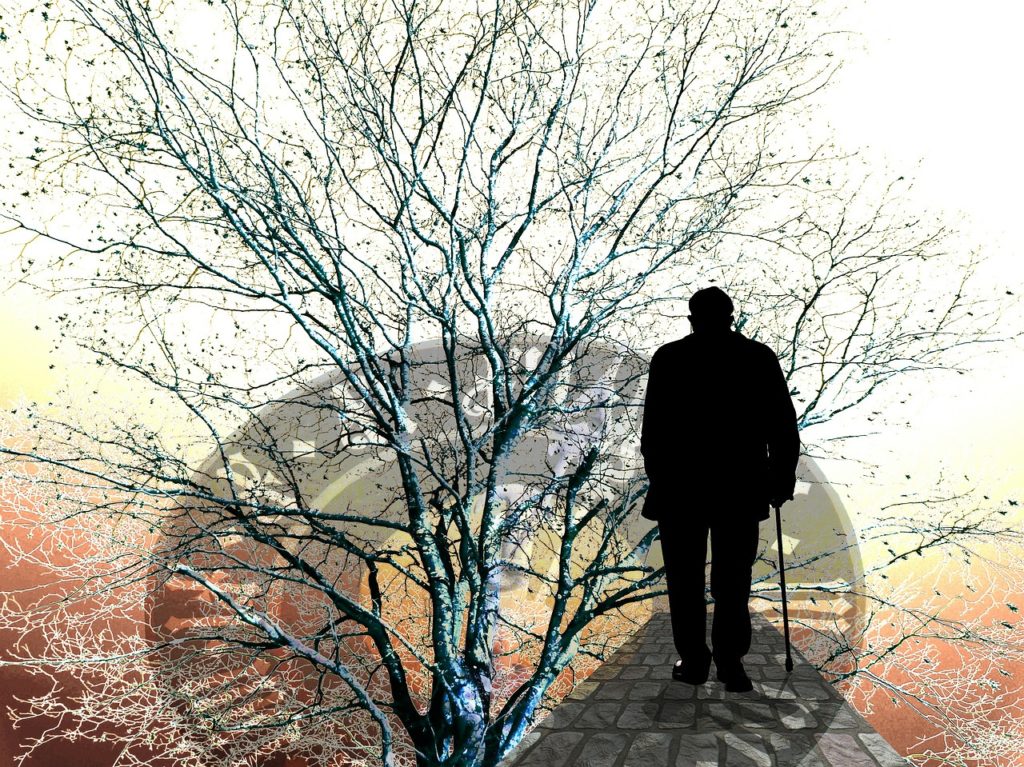An sometimes overlooked risk to hospice patients is suicide. Hospice and palliative care provider Compassus, one of the nation’s largest hospice providers, has launched an internal campaign to help its staff recognize the warning signs and identify potential interventions.
Compassus, a portfolio company of the private equity firm Towerbrook Capital Partners and the health system Ascension Health, operates more than 200 community-based hospice, palliative and home health care services locations in 30 states.
Hospice News spoke with Compassus Chief Medical Officer Kurt Merkelz, M.D., about how the issue of suicide impacts hospice patients, families and staff, the role of the interdisciplinary team and how providers are responding.

Can you help me get a picture of the prevalence of the scope of suicidality among terminally ill seniors?
We have to consider the limits of distress that an individual can take. A significant role that palliative care and hospice clinicians provide is helping patients and families deal with the emotional and physical stress of dealing with serious illness.
When you’re dealing with excruciating pain, it’s hard on your psyche as well as the body. When you translate this to an elderly individual who has a serious disease, potentially a life-limiting diagnosis or serious symptoms every hour of every day, the mental and psychological toll is severe.
Older adults have a higher suicide rate compared to younger adults, especially those who have a previous history of psychiatric illness, mental disorder, or uncontrolled pain. We see high rates of suicidal thoughts among those 65 and older, males, and terminally ill patients with cancer.
It also extends beyond just the patient. Bereaved family members are at increased risk of suicide after the loss of a close loved one, and caregivers and health care workers who have high rates of burnout and high rates of vicarious trauma from caring for individuals during this COVID pandemic are at elevated risk as well.
Is there available data comparing suicide rates among patients who recieve hospice to those of the general populaton?
The high suicide rate among cancer patients has actually declined during the last 20 years, hand in hand with rising hospice and palliative care utilization. Authors of a recent study show declining suicide rates between the years 2000 and 2018. We’ve had a continuous significant increase in hospice utilization across the United States during that same period. The study was published in the most recent issue of the Journal of the National Cancer Institute. The authors concluded that that access to hospice and palliative care care is playing an important role in contributing to the decline in suicide among cancer patients.
There’s more to be learned and garnered from this, especially as we look into health equity. COVID has accelerated our process of utilizing data, how we access, mine and communicate data. It’s accelerating our understanding of social determinants of health. We’re recognizing more about the disparities that exist among ethnic and racial communities. This is going to be one more layer that we’re going to uncover that will help us better target specific treatments and recommendations.
What signs can help providers identify hospice patients who may be experiencing suicidal thoughts?
We need to identify those that are high risk and recognize those warning signs. Some patients may have a pre-existing mental health issue or substance use disorder. Last year in the United States we saw the highest number of deaths related to opioid medications.
Factors that raise your risk include a lack of social support, having recently lost a spouse or other loved one, or a family history of suicide. We look for signs of withdrawal family and friends, unusual levels of agitation or reckless behavior. The patient may talk about feeling hopeless, or feeling like they’re a burden on others.
Some may lack the ability to express emotions. They may seem to be impacted less by experiences or have a hard time feeling happiness or joy. These are all signs that need to be concerned. An individual might say that they want to die or don’t know why life is worth living, but we can’t wait for those kinds of statements.
When some of those risk factors are identified, how does that provider respond? How do they communicate with the family as well about what’s going on?
It takes time, effort and trust, to uncover these emotions. This is incredibly hard to talk about. I refer to an acronym, NICE [Notice, Invite, Challenge, Encourage].
Notice: Be aware of people that are around you, and take the time to see the ways people are behaving and talking. When we get so busy as clinicians we sometimes go fast. We come in and provide the care and then leave. We don’t always take the time to really sit down and assess how the patient is doing, what they are concerned about or afraid of. That’s got to be part of what we do to identify the risk, examine how we communicate with the patient, family and others involved.
We need to invite people to share their feelings and communicate with us about what they are experiencing. We need to challenge them to see themselves as worthy individuals and that their lives have value at every stage, even up to the moment of death.
We need to encourage people to get help when they feel overwhelmed. The first thing that our clinicians do with families is we talk about it and ask these probing questions. How are they feeling? Have they ever thought about hurting themselves? Do they have plans to end their life?
If there appears to be a real risk, we inform other members of the care team and make sure there is a plan so the patient’s not left alone and that we contact them more often. We involve family members and help them get the emotional and social support that they need.
If they have symptoms that are contributing, we need to make sure we’re controlling and working to improve those symptoms. People shouldn’t have to do this alone.
This is an uncomfortable question, but I think we need to address it. There is a discussion in the public sphere about whether or not a terminally ill patient has the right to end their lives rather than suffering through their illness. Nine states and the District of Columbia have laws allowing for this. How does that issue factor into what we’re discussing here?
That is a very different subject. With physician aid in dying, there are components that need to be accounted for. To go down that path you need to be screened for depression. If we were to talk to advocates along this line, they tend to say that physician aid and dying is about living. These aren’t individuals that want to die. They have a situation that they’re trying to have control and autonomy over.
This is very different from suicide in individuals with profound hopelessness that feel helpless and overwhelmed. It’s a completely different situation. We need to look for indicators that a patent is considering self harm. That needs attention and awareness.
Do you think there are adequate resources to address the mental health and emotional well being of hospice patients? Of course there are social workers on the interdisciplinary team. What does Medicare benefit allow for in terms of those kinds of services?
Hospice and palliative care is about achieving good patient outcomes, getting pain and symptoms under control, and meeting their spiritual and social needs. Dealing with end-of-life and serious illness is complex and requires all members of the interdisciplinary team. It’s not a job for one person, and the needs of the patient and the family are at the center.
[The U.S. Centers for Medicare & Medicaid Services (CMS)] this year changed the way that we report the Hospice Item Set, which is part of the Hospice Quality Reporting Program and a requirement of our payment. Medicare has validated the importance of only two disciplines, nursing and social work. This is extraordinary.
They replaced measures that looked at the interdisciplinary team’s visits with what is called the “hospice visit in the last days of life.” It only captures claims data for persons who received an in-person visit from a [registered nurse] or social worker in at least two of the last three days of life. This flawed methodology invalidates the impact on patient outcomes of chaplains, of licensed practical nurses and aides who provide tremendous help to patients and families.
I think about my father in his last phase of life, very comfortable, with no active symptoms. My father absolutely hated facial hair. He came home from work everyday, and he’d take his shower and shave before coming down to have his martini with my mom. What he needed in his last days was the aide who came by and shaved him. It gave him a lot of comfort.
CMS is using a flawed methodology that invalidates non-nurse or social work members of the interdisciplinary team. Chaplains provide some of the most important care that can be delivered to a dying patient. Providing spiritual care is one of the four pillars of hospice care alongside the medical, psychological and social care. This was identified by Dame Cicely Saunders, the founder of the modern hospice movement.
CMS does not require chaplain visits to be reported on claims. Without that data, CMS has closed off its line of sight to the critical value of chaplains, hospice aides and LPNs who do amazing work every single day.
Hospice care is one of the most valuable services in our health care system today. Hopefully, we can continue to communicate this to CMS and others to help them recognize the importance of all members of the interdisciplinary team .



